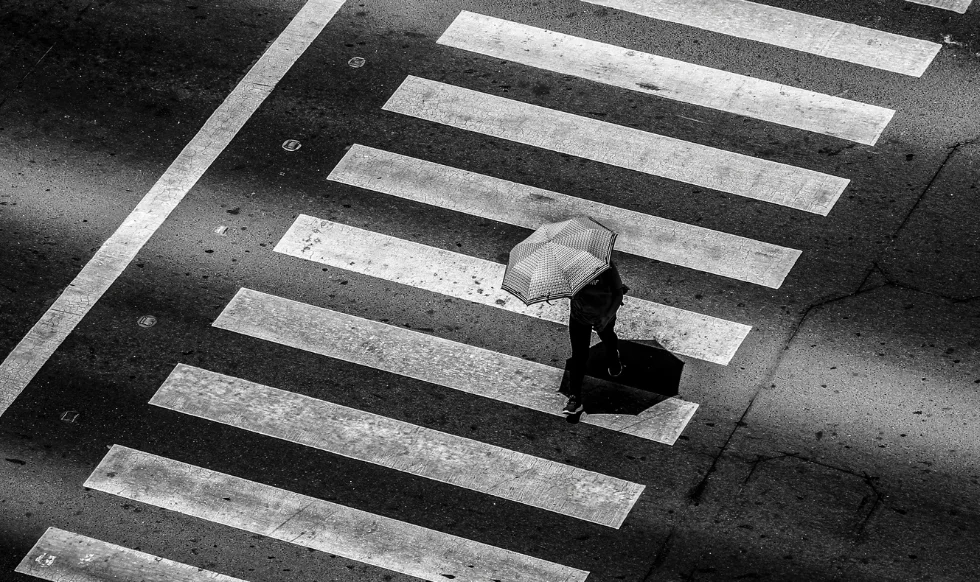Introduction
Pedestrian accidents are a sobering reality that affects countless lives each year. Whether you’re walking to work, crossing the street to meet a friend, or enjoying a stroll in your neighborhood, the simple act of being a pedestrian should not come with the risk of injury. Unfortunately, for many, it does.
If you’ve been impacted by a pedestrian accident—whether personally or while supporting someone you care about—you understand the emotional, physical, and financial toll these incidents can take. The moments after an accident are often filled with questions: What happened? Could it have been prevented? What should I do next?
Understanding the common causes of pedestrian accidents can be a powerful first step in prevention and recovery. It can also help victims and their families make informed decisions when pursuing justice and compensation for injuries sustained.
At Hurt Aid, we know navigating these challenges can feel overwhelming. Our mission is to provide clarity, support, and connection to trusted legal professionals who can guide you through this process. No one should have to face these struggles alone, and you don’t have to.
As you read on, you’ll find insights into why pedestrian accidents happen, their impact on victims, and what steps you can take to seek justice. Whether you’re seeking answers for yourself or someone you love, this guide is here to offer understanding and empower you to take the next steps forward.
The Prevalence of Pedestrian Accidents
Pedestrian accidents are more common than many realize, posing significant risks in both urban and rural settings. Each year, thousands of individuals are injured or lose their lives simply walking on roads, crosswalks, or sidewalks. According to recent statistics, pedestrian accidents account for a large percentage of traffic-related fatalities, and the numbers have been steadily rising due to increasing urbanization and distracted driving.
These accidents often occur in scenarios where pedestrians should feel safe—such as at marked crosswalks, school zones, or busy intersections. Urban areas, with their dense populations and high traffic volume, are particularly susceptible. However, rural areas are not exempt, as higher speed limits and fewer sidewalks contribute to their own unique dangers.
Certain groups are especially vulnerable. Children, who may not fully understand traffic rules, and the elderly, who may have slower reaction times or mobility challenges, are at greater risk. Similarly, individuals with disabilities often face heightened challenges navigating poorly designed or maintained pedestrian infrastructure.
These statistics aren’t just numbers—they represent people, families, and communities forever changed. While the causes of pedestrian accidents vary, understanding these contributing factors is essential for prevention and recovery. The following sections will explore the most common causes, offering insights into why these accidents happen and what can be done to mitigate their impact.
Top Causes of Pedestrian Accidents
Pedestrian accidents don’t happen by chance; they are often the result of preventable behaviors, poor decision-making, or environmental factors. Understanding the most common causes can help individuals stay safe and hold negligent parties accountable when accidents occur.
1. Distracted Driving
One of the leading causes of pedestrian accidents is distracted driving. Whether it’s texting, eating, adjusting the radio, or using GPS, drivers who divert their attention from the road create dangerous situations. Even a few seconds of distraction can result in missing a pedestrian entering a crosswalk or walking alongside the road.
For victims, these split-second lapses in attention can lead to life-altering injuries or worse. Pedestrians should remain vigilant and avoid assuming drivers are paying full attention, especially at intersections.
2. Failure to Yield
Many pedestrian accidents occur because drivers fail to yield at crosswalks or intersections. Despite laws requiring vehicles to stop for pedestrians, these rules are often ignored or misunderstood. Drivers in a hurry may rush through intersections, assuming they have the right of way, while pedestrians expect a clear path. This dangerous disconnect leads to countless accidents each year.
3. Speeding
Speeding not only increases the likelihood of an accident but also significantly worsens its severity. A vehicle traveling at high speeds has less time to stop and a greater impact force upon collision. For pedestrians, this often translates to catastrophic injuries or fatalities. Areas with strict speed limits, like school zones, exist to protect pedestrians, but when drivers disregard these limits, they put everyone at risk.
4. Driving Under the Influence
Driving under the influence of alcohol or drugs remains a major factor in pedestrian accidents. Impaired drivers have reduced reaction times, poor judgment, and difficulty seeing pedestrians, especially at night. The consequences of these accidents are often severe, leaving victims and their families grappling with devastating outcomes.
5. Poor Visibility
Low visibility, whether due to nighttime conditions, inclement weather, or inadequate street lighting, plays a significant role in pedestrian accidents. Drivers may fail to see pedestrians crossing the street or walking along poorly lit roads. Pedestrians can mitigate this risk by wearing reflective clothing and using flashlights, but it is ultimately the driver’s responsibility to remain cautious and aware.
6. Jaywalking
While drivers are often at fault, pedestrians can contribute to accidents by disregarding traffic laws. Jaywalking—crossing streets outside of designated crosswalks or against traffic signals—is a common factor in many accidents. Pedestrians may assume they can safely cross anywhere, but drivers are not always prepared for unexpected crossings.
7. Reckless or Aggressive Driving
Aggressive driving behaviors, such as running red lights, speeding through yellow lights, or making unsafe turns, frequently result in pedestrian accidents. Impatient drivers may try to beat the clock at intersections, not realizing a pedestrian is already in the crosswalk. These reckless behaviors are entirely preventable and account for a significant number of avoidable accidents.
8. Defective Road Infrastructure
Poorly designed or maintained infrastructure can also contribute to pedestrian accidents. Areas without sidewalks, crosswalks, or pedestrian signals force pedestrians to navigate unsafe conditions. Broken or missing signage can leave both drivers and pedestrians confused about who has the right of way, increasing the risk of collisions.
By understanding these common causes, both drivers and pedestrians can take proactive steps to reduce the likelihood of accidents. However, when negligence leads to an accident, victims have the right to seek justice and compensation for their injuries. In the next section, we’ll explore the impact of pedestrian accidents and how they affect victims and their families.
The Consequences of Pedestrian Accidents
Pedestrian accidents leave lasting impacts, both visible and invisible. For victims and their families, the aftermath of these incidents can be overwhelming, often reshaping their lives in profound ways. Understanding the consequences highlights the importance of prevention and the need for justice when negligence is involved.
Physical Injuries
The injuries sustained in pedestrian accidents can be catastrophic. Without the protection that vehicles offer, pedestrians often bear the full force of a collision. Common injuries include:
- Broken bones: Fractures in the arms, legs, ribs, or pelvis.
- Head trauma: Concussions or traumatic brain injuries (TBIs) that can have lifelong effects.
- Spinal injuries: Damage to the spine, leading to paralysis or chronic pain.
- Internal injuries: Damage to organs caused by the impact.
- Cuts and bruises: While seemingly minor, they can still result in permanent scarring or emotional trauma.
These injuries often require extensive medical treatment, from surgeries to rehabilitation, creating physical and emotional burdens for victims.
Emotional and Psychological Toll
Beyond physical injuries, pedestrian accidents frequently result in emotional and psychological distress. Victims may experience:
- Post-Traumatic Stress Disorder (PTSD): Reliving the accident through flashbacks or nightmares.
- Anxiety and depression: Struggles with fear of being near traffic or loss of independence.
- Emotional trauma: Coping with disfigurement or long-term disability.
Families of victims also suffer emotionally, often facing stress from caregiving responsibilities or the grief of losing a loved one.
Financial Impact
Pedestrian accidents can lead to significant financial challenges, such as:
- Medical expenses: Bills for emergency care, hospital stays, surgeries, and long-term rehabilitation.
- Lost wages: Victims may be unable to work temporarily or permanently, impacting their household income.
- Ongoing care costs: Expenses for physical therapy, home modifications, or assistive devices like wheelchairs.
The financial strain can exacerbate the emotional burden, leaving victims and families struggling to make ends meet.
Long-Term Implications
For many, the effects of a pedestrian accident extend far beyond the initial recovery period. Some face permanent disabilities, limiting their ability to work, engage in daily activities, or live independently. Others may experience chronic pain or mobility issues that require ongoing medical intervention.
These long-term consequences not only alter the victim’s quality of life but also impact their loved ones. Spouses, children, and caregivers often adjust their lives to provide support, adding to the ripple effect of the accident.
The Importance of Justice
When pedestrian accidents result from negligence—whether by a distracted driver, poor road design, or another preventable factor—victims and their families have the right to seek justice. Legal claims can provide compensation to cover medical bills, lost wages, and other damages, helping families rebuild their lives.
Legal Implications of Pedestrian Accidents
When a pedestrian accident occurs, determining who is at fault and navigating the legal aftermath can feel overwhelming. Understanding the legal implications can empower victims and their families to take action and seek the justice they deserve.
Determining Fault
In pedestrian accidents, the primary question is often: Who was negligent? Negligence refers to the failure to exercise reasonable care, and it can apply to both drivers and pedestrians.
- Driver Negligence: Common examples include distracted driving, speeding, running red lights, or driving under the influence. If a driver failed to follow traffic laws or acted recklessly, they might be held liable for the accident.
- Pedestrian Negligence: While drivers are often at fault, pedestrians can also contribute to accidents by jaywalking, ignoring traffic signals, or walking in restricted areas.
- Shared Fault: In some cases, both parties may share responsibility. Laws vary by state, but many allow compensation to be reduced based on the victim’s percentage of fault. For instance, if a pedestrian is deemed 20% at fault, their compensation may be reduced by that amount.
Proving Negligence
To build a successful legal claim, the victim (or their attorney) must prove that negligence occurred. This involves demonstrating:
- Duty of Care: The responsible party owed a duty of care, such as a driver’s responsibility to follow traffic laws and ensure pedestrian safety.
- Breach of Duty: The responsible party failed to uphold this duty by acting recklessly, negligently, or illegally.
- Causation: The breach of duty directly caused the pedestrian’s injuries.
- Damages: The victim suffered physical, emotional, or financial harm as a result.
Evidence, such as witness statements, surveillance footage, accident reports, and medical records, plays a crucial role in proving negligence.
Compensation for Victims
Victims of pedestrian accidents may be entitled to compensation for various damages, including:
- Medical Expenses: Both immediate costs (hospital stays, surgeries) and future needs (rehabilitation, assistive devices).
- Lost Wages: Compensation for time missed from work due to injuries and loss of future earning capacity.
- Pain and Suffering: Acknowledgment of the emotional and physical toll of the accident.
- Property Damage: Reimbursement for personal belongings damaged during the accident, such as phones or other valuables.
- Wrongful Death: In fatal cases, families can pursue claims for funeral expenses, loss of companionship, and other damages.
Statutes of Limitations
Every state has a time limit, known as the statute of limitations, within which a legal claim must be filed. These deadlines vary and depend on the circumstances of the accident. Failing to file within this timeframe can result in losing the right to pursue compensation. Consulting with an experienced attorney is crucial to ensure timely action.
The Role of an Attorney
Navigating the legal system can be complex, particularly when dealing with insurance companies and shared fault laws. An experienced attorney can:
- Investigate the accident to gather evidence.
- Negotiate with insurance companies for fair compensation.
- Represent victims in court if a settlement cannot be reached.
While the legal process may seem daunting, it’s an essential step toward recovery. Victims deserve justice, and legal claims provide an avenue for holding negligent parties accountable.
Preventative Measures for Pedestrian Safety
Preventing pedestrian accidents requires a collaborative effort from everyone who shares the road: drivers, pedestrians, and city planners. By understanding and adopting safety measures, we can work toward reducing these tragic incidents and creating safer environments for all.
For Drivers: Stay Alert and Responsibly
- Avoid Distractions: Keep your eyes on the road and avoid activities like texting, eating, or adjusting your GPS while driving.
- Obey Traffic Laws: Follow speed limits, stop at red lights and stop signs, and always yield to pedestrians at crosswalks.
- Be Cautious in High-Risk Areas: Slow down in school zones, neighborhoods, and areas with heavy foot traffic.
- Never Drive Under the Influence: Alcohol and drugs impair your ability to react quickly and make safe decisions.
- Watch for Pedestrians in Poor Visibility: Be extra vigilant during nighttime or in bad weather, especially near intersections or in dimly lit areas.
For Pedestrians: Practice Awareness and Safety
- Use Crosswalks and Follow Traffic Signals: Always cross at designated areas and wait for walk signals when available.
- Stay Visible: Wear bright or reflective clothing at night and carry a flashlight if walking in poorly lit areas.
- Avoid Distractions: Keep your focus on the road, not your phone or headphones, to stay aware of your surroundings.
- Make Eye Contact with Drivers: Ensure that drivers see you before crossing, especially at busy intersections.
- Walk Defensively: Assume that drivers may not see you, even if you have the right of way.
For City Planners: Design Safer Spaces
- Improve Pedestrian Infrastructure: Add sidewalks, crosswalks, and pedestrian signals in high-traffic areas.
- Install Better Lighting: Enhance visibility by ensuring streets, crosswalks, and intersections are well-lit at night.
- Implement Traffic-Calming Measures: Use speed bumps, roundabouts, and narrow lanes to encourage slower driving.
- Create Pedestrian-Only Zones: Designate areas where vehicles are prohibited to reduce risks in busy urban spaces.
- Increase Public Awareness: Run campaigns to educate both drivers and pedestrians about safety rules and the importance of vigilance.
Shared Responsibility
Safety on the roads is a shared responsibility. Drivers must remain cautious and respectful of pedestrian rights, pedestrians must follow traffic rules and stay alert, and city planners must create environments that prioritize safety for all. When everyone does their part, accidents can be significantly reduced.
In the final section, we’ll summarize key takeaways and discuss how Hurt Aid can help those affected by pedestrian accidents take their next steps toward recovery and justice.
Conclusion
Pedestrian accidents are a stark reminder of how quickly life can change due to a moment of negligence. The consequences—whether physical, emotional, or financial—can be overwhelming for victims and their families. Understanding the common causes of these accidents and taking preventative measures can save lives and reduce injuries.
If you or someone you know has been affected by a pedestrian accident, you’re not alone. Hurt Aid is here to help. Navigating the aftermath of an accident can feel confusing and stressful, but you don’t have to face it without guidance. Hurt Aid connects you with trusted legal professionals and resources, ensuring you have the support needed to make informed decisions and seek justice.
Taking the first step toward recovery can be daunting, but it’s also empowering. Whether you’re seeking compensation for medical bills, lost wages, or emotional trauma, knowing your rights is key. Reach out to Hurt Aid today to explore your options and begin the journey toward resolution and recovery.
Remember, safety on the road is a shared responsibility. Together, we can create a safer environment for everyone.





